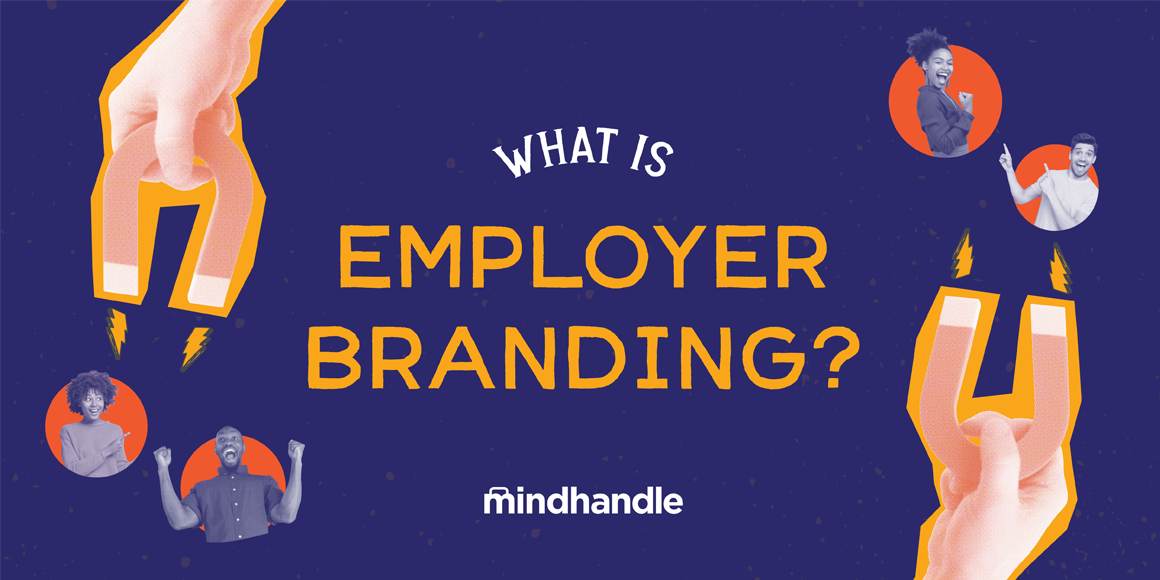
More than ever, being an employer of choice is necessary to attract and retain talent. It can also attract consumers by demonstrating integrity and reinforcing shared values. But it’s not as simple as just aspiring to have a reputation of excellence when budget, time, and dated perceptions stand in the way.
Convention has long established that brands set aside great amounts of money to acquire and keep customers. The same can’t be said for employee communication and recruitment budgets. While both consumers and talent have high expectations for a company’s reputation, employer branding isn’t funded with equitable support.
In the age of brand transparency and increasing employee discontent, this imbalance is on full display. Making the case for employer branding begins with understanding what it is and the ROI of the time and resources it takes.
What is employer branding?
Employer branding is everything an organization does to manage and maintain its reputation with current and prospective employees. These activities, from internal communication strategies to recruitment, should incorporate the mission, values, culture, and personality of an employer to reflect a clear value proposition. Doing so will paint a clear picture of the environment in which candidates can be successful.
Reputations, whether at a corporate level or a personal level, are not self-determined. They’re informed by conduct and perception. Intentional messaging can build a brand’s reputation by expressing what the brand prioritizes, sharing the experience of employees, and bringing the story of a brand to life.
Frost, a Texas-based bank, addresses this challenge with an employer branding campaign focusing on what it means to be an employee. The bank establishes an emotional connection by translating the consumer message, “It’s about more than money,” to the employee journey, “That’s what it’s about.”
By showcasing real employee experiences, the values of integrity, caring, and excellence are able to demonstrate the Frost culture in a way to attract the right candidates and cultivate brand champions among existing employees.
What’s the difference between employer branding, employment branding, and employee branding?
The difference between each of these terms is the associated audience. Each offers something different in expressing how to make work matter at every level with an organization and every stage of an employee’s relationship with their employer.
Employment branding captures the broadest audience, extending all communications and activities to current, future, and past employees. In contrast to employer branding, this umbrella includes messaging for individuals who contribute to the reputation and legacy perception of an organization as an employer.
Employee branding captures the narrowest audience, focusing on individual experiences and expressions to enable employees to internalize the employer’s mission, vision, and values. This can be a critical opportunity to differentiate communication in a crowded job market and enable candidates to develop clear expectations of what success looks like.
Why does cultivating your employer brand matter?
Beyond simply setting your organization apart from competitors, cultivating an employer brand will be invaluable toward the goals of your human resources department. A proactively managed employer brand can deliver:
- Employee retention by developing meaningful connections with employees. This fosters brand champions with a career mindset, reduces turnover, and saves costs associated with churn.
- Employee satisfaction and morale by strengthening engagement and increasing productivity.
- The right talent for the job by communicating what your brand values before they even interview. This ensures a strong cultural fit for better candidate success, smoother onboarding, faster integration into their role, and business success.
How do you get started with employer branding?
Take a focused approach at each step, and build momentum with more stakeholders who can provide perspective and collaborate through the process. As you make progress and begin to see results, you’ll be able to envision the outcome without becoming overwhelmed by the distance between where your employer brand is and where you want it to be.
Identify the problem to solve.
The first step in developing a strategy is to understand what’s not working. Ask key questions so you can take decisive action with goals in mind.
- If we’re not an employer of choice, why?
- If we don’t have a great reputation among candidates, why not?
- If our employee engagement scores aren’t where we want them to be, what is limiting them?
Develop a hypothesis with collective input.
As you consider the problems you’re solving, bring teams together to align on the goals for your employer branding. This will keep you working toward the same outcomes and provide perspective to inform the objectives to get you there.
- Human resources should serve as the ultimate authority of your employer brand. Your HR team is responsible for the talent experience and offers expertise in what messages are most compelling.
- Internal communications should serve as an advocate for your current employees and the ways they prefer to engage. This team knows how to ensure the message reaches its audience.
- Marketing should serve as the architect of strategic communication and brand-building. The team’s comprehensive knowledge of the consumer brand and its audience will be critical in shaping belief in the employer brand.
Test your theory.
Once you know what’s not working and what success looks like, you can then determine how to take action. Be careful not to overcommit, and focus on building sustainable momentum.
- Outline specific, measurable opportunities to strengthen your brand messaging.
- Align opportunities with short- and long-term goals.
- Encourage ownership of objectives by designating key stakeholders.
- Set your plan into motion.
- Create a timeline to assess results and acknowledge where you’ve made progress.
- Optimize your approach to continue making strides in the right direction.
Remember: Employer branding is not all or nothing. Progress is hard-earned and should be celebrated. Building strength takes time and determination, and the stronger you become, the more stamina and velocity you can sustain.
Need a Master Orchestrator? Contact MindHandle
There are plenty of ways—and terms to navigate—to strengthen an employer brand, but sometimes the biggest challenge is coordinating solutions. Our expertise demonstrates our capability to cover the spectrum with industry-leading strategy and creativity.
While we’ll never know your business like you do, we know how to communicate with employees and can craft authentic messaging. Let’s talk about how we can work together to create an employer brand that resonates.
To learn more, download our free checklist, Maximizing Your ROI: Agency vs. In-House Employer Branding Solutions.



